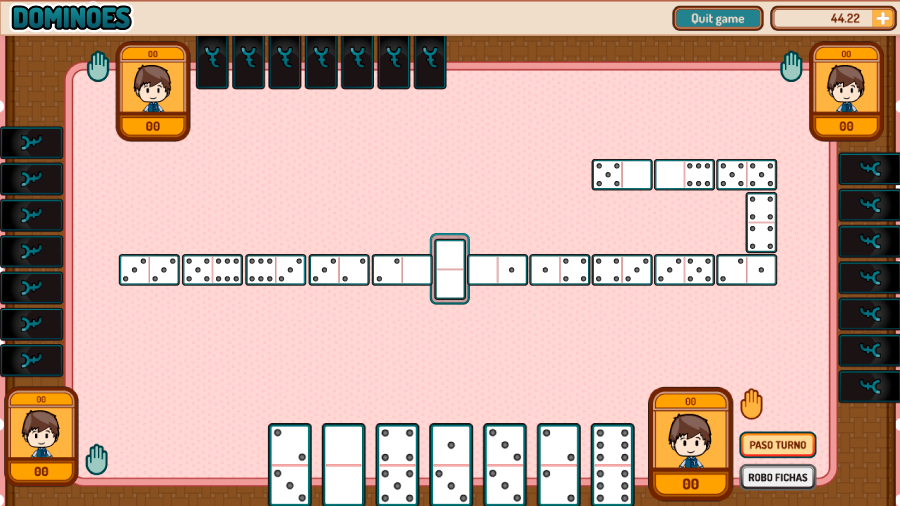

Rules of Dominoes
How to play Dominoes
Dominoes is a board game that can be considered a variant of Craps. Although it is thought to have Eastern origins and is a very old game, the version we know today did not reach Europe until the mid-18th century, when it was introduced by the Italians.
Aim of the game
The objective is to place all the tiles on the table before the others and accumulate points. The player who wins a round scores points according to the number of tiles their opponents have not been able to place. The game ends when a player or a pair reaches the stipulated score.
Elements of the game
To play dominoes, you have 28 rectangular tiles, each divided into two sections showing numbers from 0 to 6. These tiles cover all possible combinations with these numbers.
Number of players
It can be played with 2, 3 or 4 players, including in pairs.
Start and flow of the game
At the start of the round, each player receives 7 tiles. If there are fewer than 4 players, the remaining chips are left in the pot.
The round starts with the player who has the highest double tile (in a game of 4, the double 6 will always start). If no one has a double, the player who has the highest scoring tile starts.
The player who starts the round is known as the "hand", a key concept in the strategy of the game, since this player or pair generally has the advantage. This player places their piece in the centre of the table and, from there, the game continues anticlockwise.
Gameplay
During their turn, each player must place a tile on one of the two open ends on the table, making sure that the dots match. The double chips are placed crosswise for easy identification.
Once the player places their tile, their turn ends, and the next one goes.
If a player can’t go, they must draw as many tiles as they need from the pot. If there are no tiles in the pot, it is the next player’s turn.
End of the round
The round continues with players placing their chips until one of the following situations arises:
Domino: When a player places his last tile, they announce “Domino”. If you play in pairs, you add up everyone's points, including your partner's; if you play alone, you add up your opponents' points.
Close: If none of the players can continue, for example, because the end numbers have been played 7 times, a close is declared. Players count the points on their remaining tiles; the player or pair with the fewest points wins and adds up the points as usual.
In the event of a tie, the player or pair who has been "hand" or is closest to the player who was "hand" wins.
Following rounds
In the following rounds, the player who starts is the next player in turn and they may start with any tile, it doesn’t necessarily have to be a double.
End of the game
The game ends when a player or pair reaches the number of points needed to win.
Gather your friends and enjoy an exciting game of Dominoes, where strategy and fun combine!












